Movie Review – Fly, The (1986)
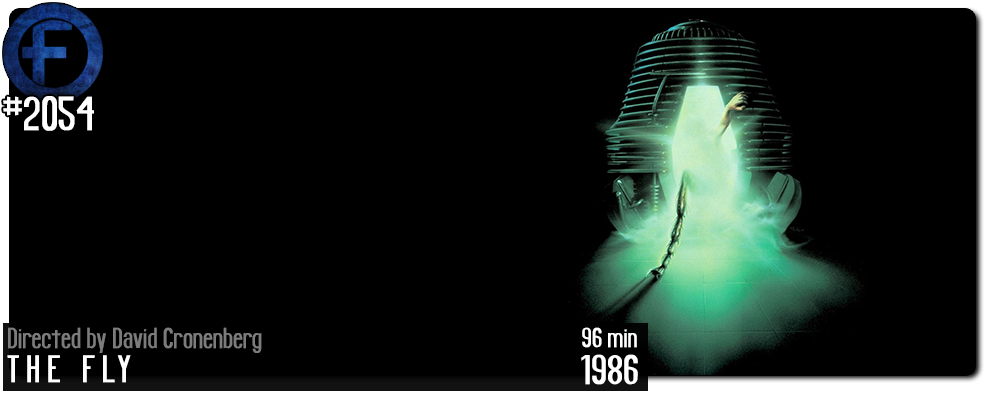
Principal Cast : Jeff Goldblum, Geena Davis, John Getz, Joy Boushel, Leslie Carlson, George Chuvalo, David Cronenberg.
Synopsis: A brilliant but eccentric scientist begins to transform into a giant man/fly hybrid after one of his experiments goes horribly wrong.
********
A loose remake of both the original 1957 short story by George Langelaan and the 1958 feature film that followed it, body-horror maestro David Cronenberg’s version of The Fly is an effective little chiller that shows a man’s gradual descent into paranoia, hubris and eventually deformation all in the name of science, accompanied by a respectably demure turn from Geena Davis as his perfect on-screen romantic partner. The man-vs-monster motif is flipped on its head in this dramatic and insanely effective sci-fi horror, offset by the winning persona of Jeff Goldblum playing the charming and tragic leading man. Cronenberg’s The Fly has become ubiquitous in many “best of” lists and cultural nods, referenced by modern filmmakers and storytellers alike through the decades since, and despite the failure of a hastily produced (and ill-conceived) sequel, this film remains an indelible trip via a nostalgic 80’s aesthetic.
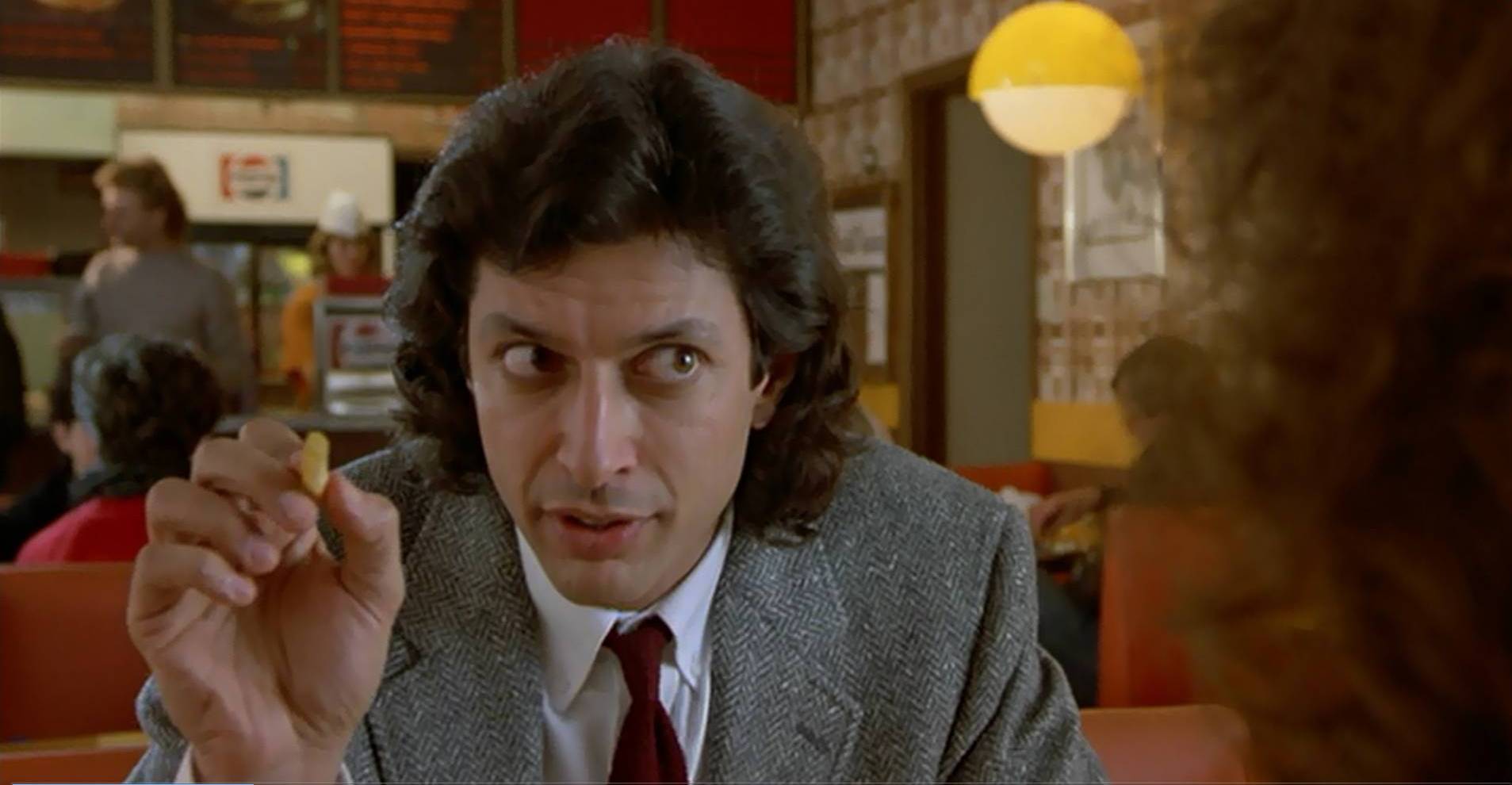
After meeting eminent scientist Seth Brundle (Goldblum) at a press event, journalist Veronica “Ronnie” Quaife (Geena Davis) accompanies him back to his warehouse laboratory to view his most startling invention: a teleportation device that he hopes will revolutionise transport and change the world. The only trouble is, the teleport pods only work on inanimate objects, a problem Seth is struggling to overcome. Ronnie, who is trying to distance herself from the attention of her editor, and former lover, Stathis Borans (John Getz), finds Seth’s work to be a breakthrough journalistic story, but his disenchantment with failure leads to their relationship becoming quite rocky. One night, believing Ronnie to have slept with Stathis, Seth places himself in the teleport pod in order to make himself the test subject, only to inadvertently also have a common housefly inside the vessel as well – through the magic of computer limitations, Seth’s DNA and the fly’s DNA are combined at a genetic level, leading Seth to begin the slow, painful transformation from human into a monstrous combination of both.
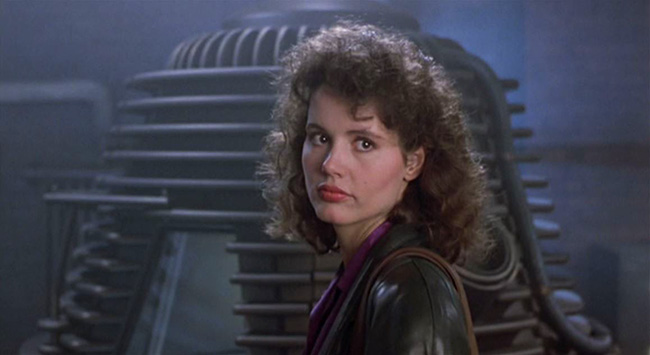
Watching Cronenberg’s The Fly nearly forty years after its release is quite the interesting experience. Well known today among film fans for his explicit body-horror works such as Naked Lunch, Crash, and eXistenz, Cronenberg’s more recent output has remain firmly entrenched in the realm of crime, drama and thrillers – Eastern Promises, Cosmopolis and A Dangerous Method are excellent in their own right – although his 2022 effort, Crimes of The Future, saw him return to the skin-piercing, limb-rending noir horror he built his career on. The Fly came along at exactly the right time for Cronenberg’s career to solidify in the minds of the general public; the 1980’s saw an explosion of low-budget genre films turn into box-office gold, from John Carpenter’s The Thing remake and They Live, Tobe Hooper’s Lifeforce, Stuart Gordon’s The Re-Animator, Chuck Russell’s The Blob remake, as well as countless creature-features from Tremors down to Critters and all the varied sequels, the horror genre was well served during this decade and nobody took more acute notice of this than Cronenberg. The Canadian director gave us not only The Fly, but Scanners, Videodrome, The Dead Zone and Dead Ringers all within the same decade, a collection of cult classics that solidified him as one of the preeminent visual talents to come out of the Hollywood machine. The Fly traded heavily in similar shocking horror motifs as Cronenberg’s contemporaries, although typically where shock value might reside there’s at least a modicum of intelligence and an ample helping of hubris-led tragedy.
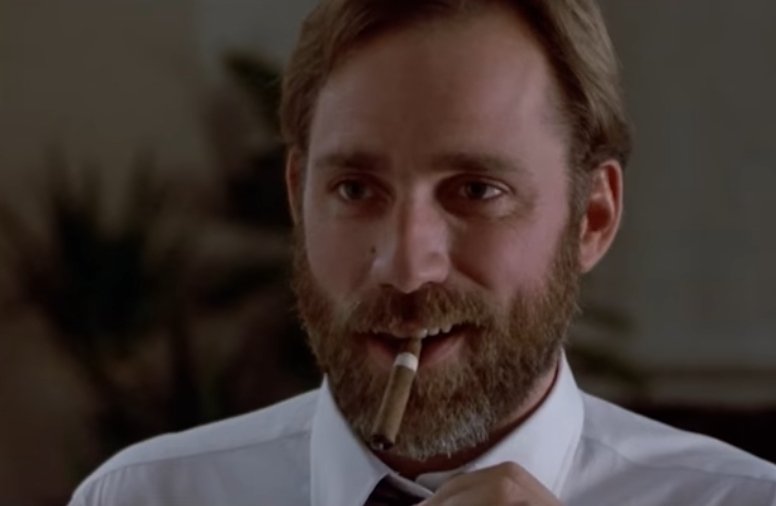
The original screenplay was written by Charles Pogue, and then re-written by Cronenberg, and posits that technology will pave the way for global changes in many varied areas of society, not the least being transportation. The idea of being able to travel almost instantly from point to point over incredible distances has long been a staple of science fiction for years, perhaps none more prominently than Star Trek’s ubiquitous transporter technology, and The Fly takes that seemingly benign premise and transforms it into an absolute nightmare. The paradigm of computer technology at the time was such that, as Goldblum’s Seth Brundle remarks, “computers are dumb” making them entirely reliant on human input is a touch outdated by comparison to today’s quantum processors, but the technological certainty is still relevant; computers are only as smart as we make them, and in the mid 1980’s we made them dumb as a box of rocks. A computer unable to differentiate between human cells and a common housefly, without proper safeguards, would reintegrate both strands of genetic material back together were it not commanded to keep them separate, and this scenario is what propels The Fly’s gradually horrifying revelation to its ultimate, terrifying conclusion.
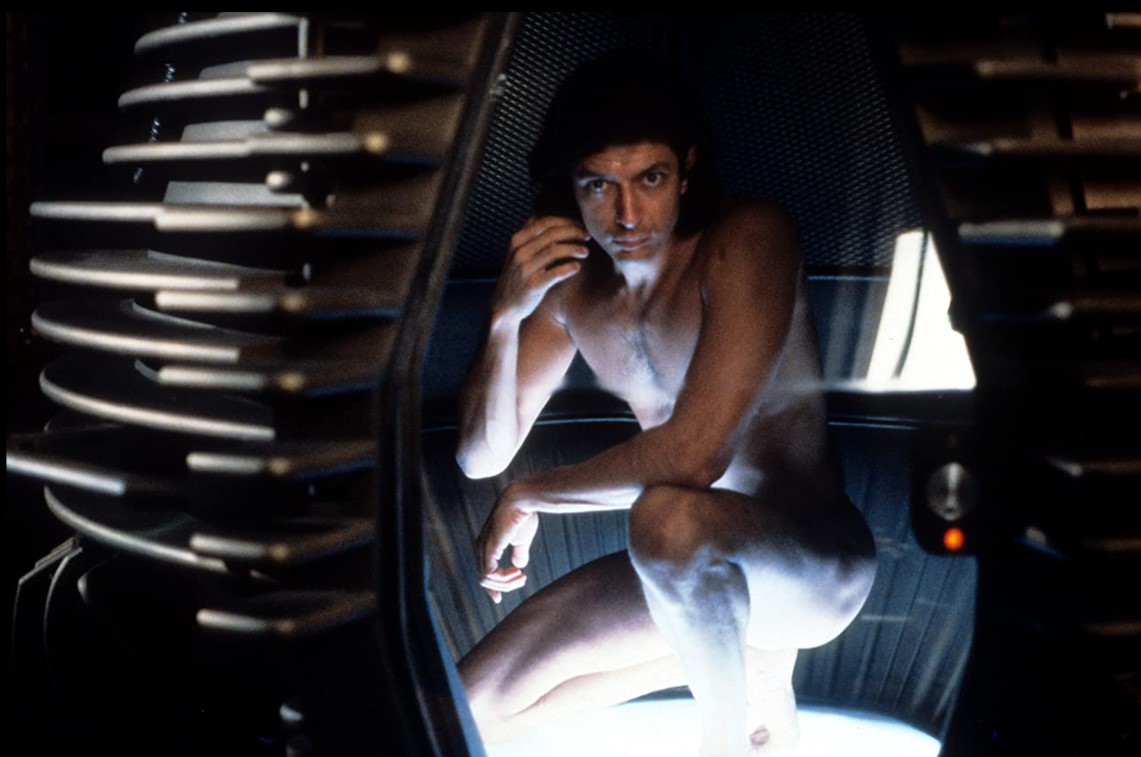
The script is a tight one, with a minimal cast over a brief handful of locations, the most prominent being that of Brundle’s warehouse residence. Cronenberg reduces the number of characters he has to deploy and ensures the narrative is confined to only a duo of viewpoints – Brundle’s and Ronnie’s – at any one point, which ensures maximum shock value for the few in the cast who have to witness the scientist’s transformation from human to human-fly hybrid – or, as the film succinctly puts it, a “Brundlefly”. The dialogue is portentous, delivered with wit and humour by Goldblum and Davis, the latter of whom moves beyond simply a passive onlooker into an active participant in the story thanks to a clever nightmare-fuel dream midway through the movie. The opening half, pre-fly as it were, is a fairly effective sci-fi setup of exposition and character development, explaining the rudimentary science behind the teleport devices and the limitations thereof, all whilst the minds-eye image of Goldblum and Davis bumping uglies is firmly entrenched in the deep-hued cinematography. Goldblum’s chemistry with Davis is exquisite, to the point I almost wanted to film to remain focused solely on just them, but sadly all the horror body stuff has to get in the way. Neither Goldblum nor Davis put a foot wrong, and co-star John Getz has a great time playing the spurned alternative love-interest role for Davis’ character.
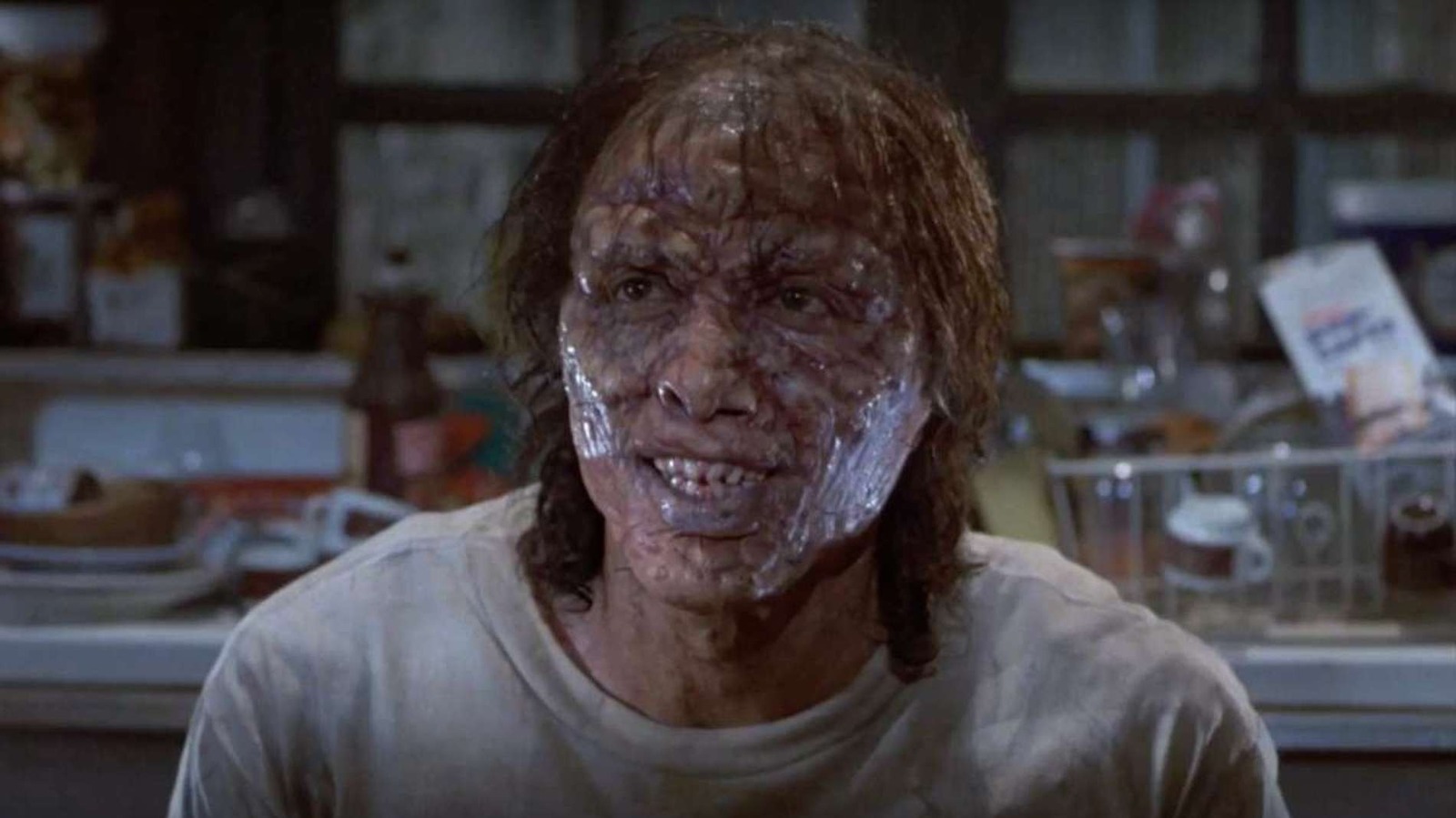
The latter half of the film is where things start to take off. Goldblum’s character turns from taciturn science nerd into a rapacious narcissist and overconfident superhuman, before his body starts to break down and manifest the characteristics of a fly. It’s a torturous manifestation indeed, as fingernails, hair, teeth and other bodily parts simply drop off like leprosy, before the final conflagration in which mandibles, fly eyes and even limbs turn this transformation from simple degeneration into outright terror for all. Geena Davis has to watch on as the man she’s come to love becomes disfigured before her eyes, with a climactic showdown involving both her, Brundlefly and Stathis’ misplaced heroism leads to one of the most gory body-horror sequences I’ve seen in years. You all know flies vomit acidic liquid to disintegrate their food before they consume it, right? Imagine that but on a human scale. Ewww.
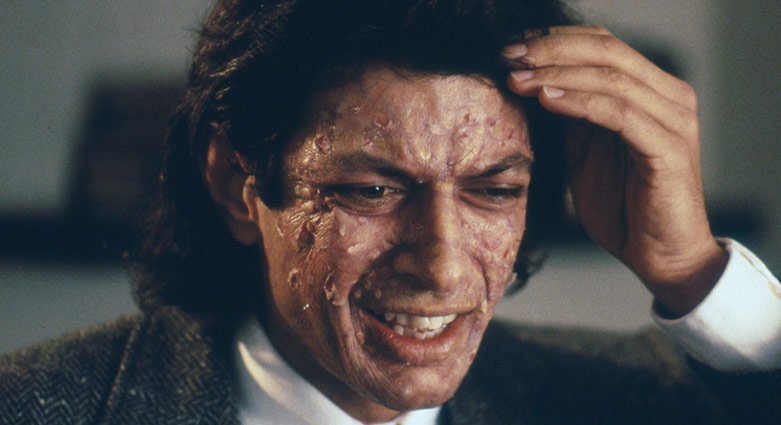
What’s interesting about The Fly is how elegantly it builds up to this before a swivelling heel-turn sends everything to hell. Cronenberg gives no indication of just how bloody things are going to get until the last possible minute, a masterstroke of maintaining suspense before the release. The combination of Goldblum’s sexual magnetism, Geena Davis’ radiant innocence, and Cronenberg’s salivatory style combine to produce a raw, pulsating and entirely effective horror movie climax, the kind of blood-soaked screamery that might give even noted gore-hound Peter Jackson pause. Great horror films don’t always show the gore and blood, but the most memorable ones often do, and that makes The Fly one of the most memorable horror films of that decade for nothing else but the final twenty minutes. The graphic nature of the creature work, all entirely practical, snagged the film an Oscar win for Best Makeup, with Chris Walas’ work in the gradual transformation of Jeff Goldblum from lesion-ridden human to grotesquely deformed coagulation notable for its proficiency. In most regards, the effects still stand up even by today’s standards.
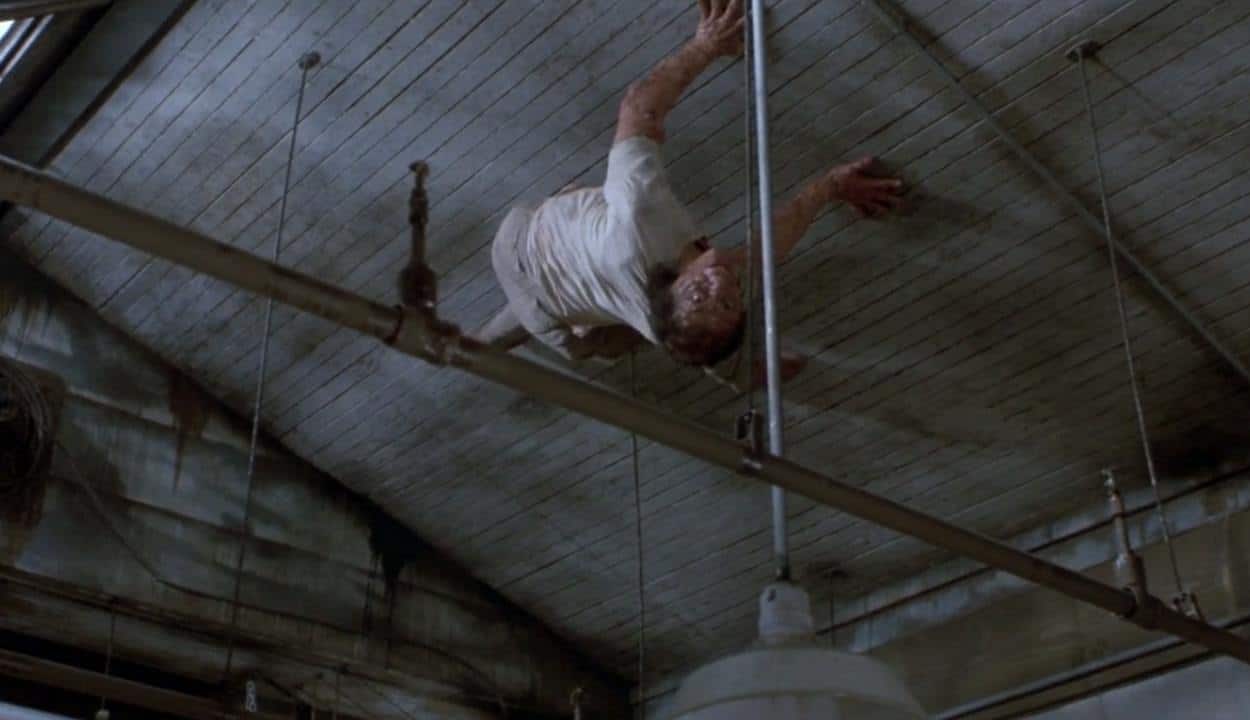
Sci-fi horror is an all-too-rare breed of film in the current marketplace. As few and far between as this subgenre of film might be now, in the 1980’s they were ever-present on cinema screens and it is likely for this reason that today’s filmmakers often reference so many examples from the period. The Fly is arguably the cleanest of the decade’s output, with a razor-tight script, a superb cast all delivering on Cronenberg’s demands for crisp, atmospheric tone throughout, and with faultless practical horror effects there’s almost nothing at a technical level that doesn’t work in this movie. Your mileage on the premise itself may vary, and the level of graphic body violence inflicted on the entirety of the cast will be off-putting in some markets, but as a cult classic The Fly maintains its effectiveness exceptionally well. A spooky, simmering diatribe on the dangers of untested technology and human overconfidence, The Fly is as terrifying now as it was back in 1986.
